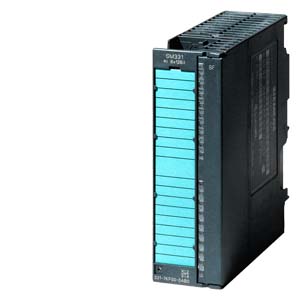ENG_3100.XML
Analog input/output modules contain analog inputs/outputs for the automation system. Via these modules, analog sensors and actuators can be connected to the automation system.
Use of the analog input/output modules offers users the following advantages:
- Optimal adaptation:
The number of inputs/outputs can be adapted to a particular task through the appropriate module combination. There is no unnecessary investment cost.
- Powerful analog technology:
Different input/output ranges and high resolution allow connection of many different analog sensors and actuators.
ENG_3104.XML
The analog input modules feature the following mechanical characteristics:
Compact design
The rugged plastic housing contains:
- Red LED for group faults.
- Plug-in option for the front connector, protected behind the front door.
- Labeling field on the front door.
- Connector pin assignment for the wiring on the inside of the front door.
Easy installation
The module is mounted on the DIN rail, and connected to the adjacent modules by means of a bus connector. There are no slot rules, the addresses of the inputs are determined by the slot.
When used in the ET 200M distributed I/O system together with active bus modules, hot swapping of the digital input/output modules is possible without any reaction. The remaining modules continue to operate.
User-friendly wiring
The modules are wired via a plug-in front connector. When the module is connected for the first time, a coding latches in the connector so that the connector now only fits onto modules of the same type. Upon module replacement, the front connector can be used fully wired for a new module of the same type. This prevents a wired front connector from accidentally being plugged into the wrong module during replacement.
Taking the tour will redirect you to our new platform. You can always come back either by hitting back button on the browser or by opening the URL again.
